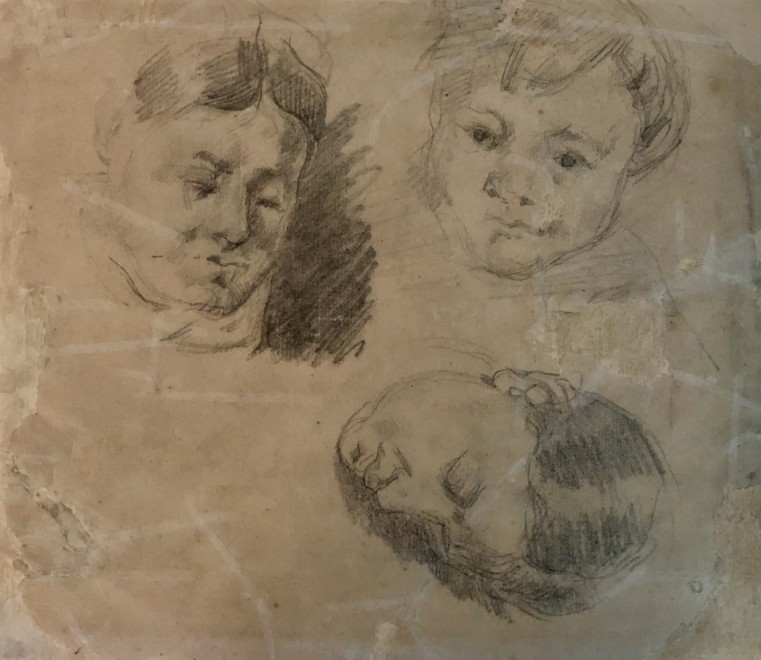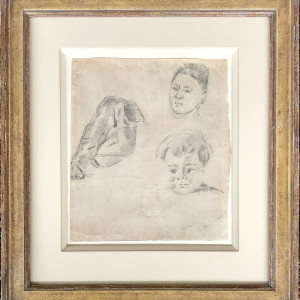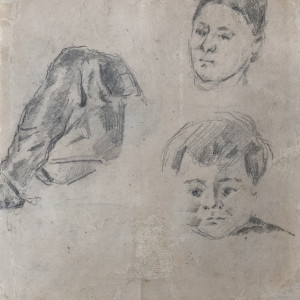Further images
Provenance
Sir Kenneth Clark; Leicester Galleries, London, 1946; Gismond Visgani
Literature: VENTURI - Catalogue Raisonné, no. 1472
Note: Cézanne met the artist's model Marie-Hortense Fiquet in 1867. They lived together for almost twenty years before getting married in 1886. Their son, Paul, was born in 1872
Literature
The subject matter and arrangement of the three studies on the present sheet are typical of the intimacy and immediacy of many of Cézanne's drawings, as well as demonstrating the manner in which he drew and evolved pictorial ideas from the domestic life taking place around him. Many sheets in Cézanne's sketchbooks were used for a number of different studies and the three drawings here are all independent, with the scale and angle of each slightly varied. Both head studieshave an informal air, with the subjects' gazes directed away from the artist. These are the two central figures in Cézanne's life, Hortense Fiquet, whom he would marry in 1886, and their son Paul, born in 1872, both immensely important as subjects for the artist. Despite her clearly and lightly modelled features this is a tender depiction of Hortense, apparently caught off guard. Her determination is caught in the firm lines of nose and jaw but the elusiveness and ambiguity of her expression reveal the artist's enduring fascination with her. It is no wonder that Hortense recurs frequently in Cézanne's drawings and paintings as an inexhaustible source ofinspiration. The drawing below Hortense, of their young son Paul, emphasises their closeness and her dual role as mother and partner adds to the complexity of her depiction. While Cézanne is clearly preoccupied with examining the shifting features of their son and is absorbed in the physicality of his presence, fascinated with the fall of shadow on the fleshier parts of his face, Paul's expression has an
inwardness and seriousness that suggests the artist is imbuing the child with his own thoughts and emotional maturity. The drawing has been dated to 1873-5 and it bears stylistic similarities to studies of these or similar subjects from around this date ('Head of the artist's son, 1876-7, ex-collection of Henry Moore, and 'Heads of Hortense Fiquet and Paul Cézanne fils, 1873-5, Ashmolean Museum Oxford). Both studies are even more engaging as we are responding purely to the subjects' heads, stripped of any attributes or setting so that the artist is reacting directly to the two people in the world to whom he is closest. The third study is similar to a later (c.1890-92) watercolour of a coat on a chair and it is intriguing to speculate whether this carefully volumetric drawing of drapery is in fact a coat and is supposed to suggest the presence of the artist, completing this subtle and affectionate description of his domestic life.
Note: This work is currently on loan to The Hugh Lane Gallery, Dublin





